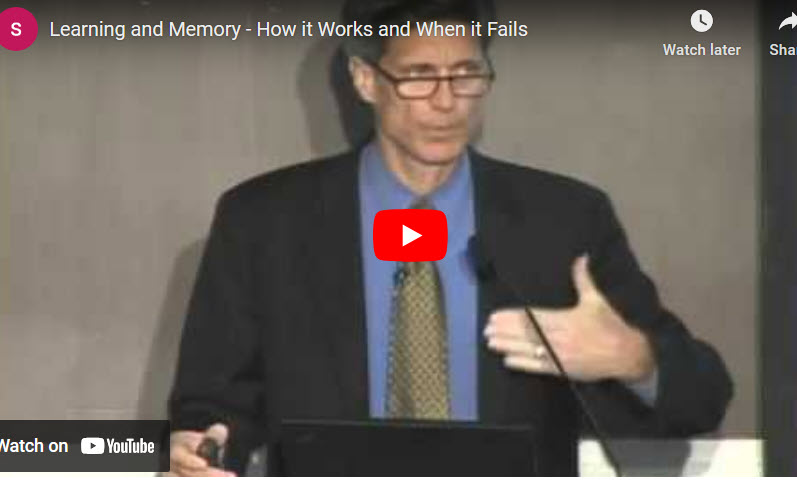Why Sleep Improves Memory
Sleep and memory
Sleep leads to memory consolidation. As you study subjects such as anatomy and physiology, the neurons in your brain’s memory storage areas rearrange their connections forming memory synapses specific for the new information you are trying to remember. For this process to complete itself properly your brain needs a period of sleep after each episode of study.
Sleep anchors the neuron changes associated with new memory into long-term stable connections. Sleep, when it comes shortly after the study of new concepts, allows neurons to consolidate the anatomical changes in the brain’s memory compartment.
The cool outcome of memory consolidation is that it creates a physical structure to support a virtual filing cabinet dedicated to specific information, which can be easily accessed for comparison when more of that type of information presents itself.
Synaptic plasticity
Synaptic plasticity is the ability of brain neurons to realign their anatomical connections based upon sensory input. It includes elimination of unused synapses and realignment of active synapses. Synapses are specialized cell membrane structures. They mark the location where communication takes place between a nerve ending and its target cell. Neuron synapses modified during memory formation are on the neuron’s dendrites at dendritic spines.
The observation of synaptic plasticity only recently replaced the long-believed dogma that neuron anatomy of the adult brain was a fixed arrangement. Neuron connections in the adult human brain were thought to be hard-wired until the late 1990s. It was taught during almost all the 20th Century that all the brain neuron connections needed were in their final form by the end of puberty. In contrast, there is now a large body of data supporting synaptic plasticity as the process by which memory is created and stored in the brain.
The synaptic plasticity theory states synapses at dendritic spines form, mature, and are deleted dependent upon the frequency of the incoming sensory nerve activity. A corollary of the theory is that neuron terminals incoming to dendrites must be mobile in order to search for available connections. In fact, axon terminals and dendrites of brain nerves have been demonstrated to possess a pulsating motion.
Memory consolidation
As you continue your studies, memories will consolidate and your virtual filing cabinet for anatomy and physiology’s language and function will become larger and more efficient. Be aware though that patience is required when you are consolidating a place in your brain to store so much data.
The concept of memory consolidation was first used by psychologists to explain how repeated exposure to related ideas increases the pace at which the brain can absorb and retain new information. Do not give up too soon on learning the details of anatomy and physiology. It takes time for a brain to build your filing cabinet for all the related information.
For example, over many years I developed a virtual filing cabinet for understanding the scientific literature that employs an array of laboratory techniques to investigate physiology and biochemistry. However, I also remember clearly how difficult and painful it was to build that memory cabinet for the first time.
Reading and understanding such papers when I was a beginning graduate student took what seemed like forever, and I remembered very little of what the investigators had learned. Now I can read a large stack of newly published papers in physiology or biochemistry in an hour, and I can remember clearly what they contain.
I have located a video on this subject for you. It is a video of a presentation by Frank Longo, MD, PhD on YouTube. Dr. Longo’s video, Learning & Memory: How it Works & When it Fails, is about two hours long. It is a lecture he presented at Stanford University in 2010.
Please do not be discouraged by length of the video. Also, be sure to watch the last time segment of Dr. Longo’s video if you watch nothing else. He has some remarkable video of the mobility of dendritic synapses.
Further reading
Memory, Patterns, and Themes in Anatomy and Physiology
Human Memory Formation and Recall
Do you have questions?
Please put your questions in the comment box or send them to me by email at DrReece@MedicalScienceNavigator.com. I read and reply to all comments and email.
If you find this article helpful share it with your fellow students or send it to your favorite social media site by clicking on one of the buttons below.
Margaret Thompson Reece PhD, physiologist, former Senior Scientist and Laboratory Director at academic medical centers in California, New York and Massachusetts is now Manager at Reece Biomedical Consulting LLC.
She taught physiology for over 30 years to undergraduate and graduate students, at two- and four-year colleges, in the classroom and in the research laboratory. Her books “Physiology: Custom-Designed Chemistry”, “Inside the Closed World of the Brain”, and her online course “30-Day Challenge: Craft Your Plan for Learning Physiology”, and “Busy Student’s Anatomy & Physiology Study Journal” are created for those planning a career in healthcare. More about her books is available at https://www.amazon.com/author/margaretreece. You may contact Dr. Reece at DrReece@MedicalScienceNavigator.com, or on LinkedIn.
Dr. Reece offers a free 30 minute “how-to-get-started” phone conference to students struggling with human anatomy and physiology. Schedule an appointment by email at DrReece@MedicalScienceNavigator.com.




The article is quite informative and interesting. Keep up the good work
Yes it is an interesting subject. Thank you. I ask myself: “What are the basis of dexterity in performing some difficult acts while one learn them?”
Learning most anything is awkward at first. But eventually with practice the desired cerebral cortex response to sensory input becomes established. If the desired response is complex it must be practiced frequently or other memory pathways will replace the original. The brain seldom wastes space.